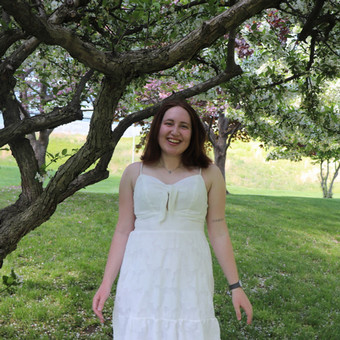Boston Public Library Showcases Undergraduate Student Essays on Urban Transformation in Waltham
By: Kathleen McMahan
The Leventhal Map & Education Center at the Boston Public Library has published research findings by Professor of Anthropology Jonathan Anjaria’s Urban Worlds (Anth 158) undergraduate spring 2024 class. Assisted by Ian Spangler, LMEC’s Assistant Curator of Digital & Participatory Geography, students learned how to georeference Sanborn fire insurance maps and overlay digital contemporary maps in order to reveal patterns and changes to the City of Waltham. The class also utilized Google maps, and site visits within Waltham to explore questions about everything from department stores to parking lots to immigration trends. The published work on Boston Public Library’s website includes five intriguing essays by the Urban Worlds undergraduate students.
 Eleanor Flynn '24
Eleanor Flynn '24
Eleanor Flynn ‘24, an economics major, was inspired to enroll in Urban Worlds as a result of her study abroad experience in Argentina, where she held an internship researching rent and housing policies. Her essay, "The changing face of downtown commerce in Waltham," explores the history of downtown Waltham’s department store and retail industry. “It seemed like the perfect way to combine this anthropological approach to urban history with my background in economics,” she explained.
Eleanor’s research highlights the large volume of department stores that once existed on downtown Waltham's Moody Street in the 1950s. “There were seven department stores within a few blocks of each other, which was hard for me to wrap my head around because that just doesn't happen in our modern economy,” she said, “It was so fascinating to me that I began to dig deeper into the rise and fall of the department store as the center of American commerce, which ultimately became the heart of my essay.” Eleanor provides a comparison of the Moody Street stores from 1952 to 2024 in her essay, including popular locations such as Lizzy's Ice Cream (previously Waltham Camera Shop) and Gustazo Cuban Kitchen and Bar (previously Sears, Roebuck & Co Dept. Store).
For Miles Goldstein ‘25, taking Urban Worlds only made him more passionate about anthropology as his chosen major. “I've always approached my work in anthropology, and my writing in general, with the axiom that truth is stranger than fiction and that the best stories lie in unseeming places,” he shared. His essay, "The ballad of Whitney Avenue," covers the transformation of Whitney Avenue from a residential cul-de-sac to a municipal parking lot. Miles appreciated how the reading assignments in class and the source material for his research challenged his previously held notions of what makes a "good city." He explained, "It's not so easy to learn to think like someone else when it comes to urban centers, our relationships are too personal, but just understanding the sheer diversity in experience and opinion can help temper that desire to assume that, just because something seems so right to you means it must be good enough for everyone else."
 From Waltham Looks Ahead, Waltham Public Library
From Waltham Looks Ahead, Waltham Public Library
Miles' work also revealed a suprisingly direct connection between the Supreme Court’s eminent domain decision in Berman v Parker (1954) and the 1955 urban renewal plan for Waltham. “It was a reminder that, in cases like Berman v. Parker, the reality of urban planning changed overnight, and the effects were felt less than a year later.” Miles enjoyed learning about the interweaving of social and city politics in his research, adding that, “It was amazing to see just how much the culture in city government could change as new people came through.”
Five student essays are available on the Leventhal Map & Education Center at the Boston Public Library. To learn more about Anthropology at Brandeis, please visit the department’s website.